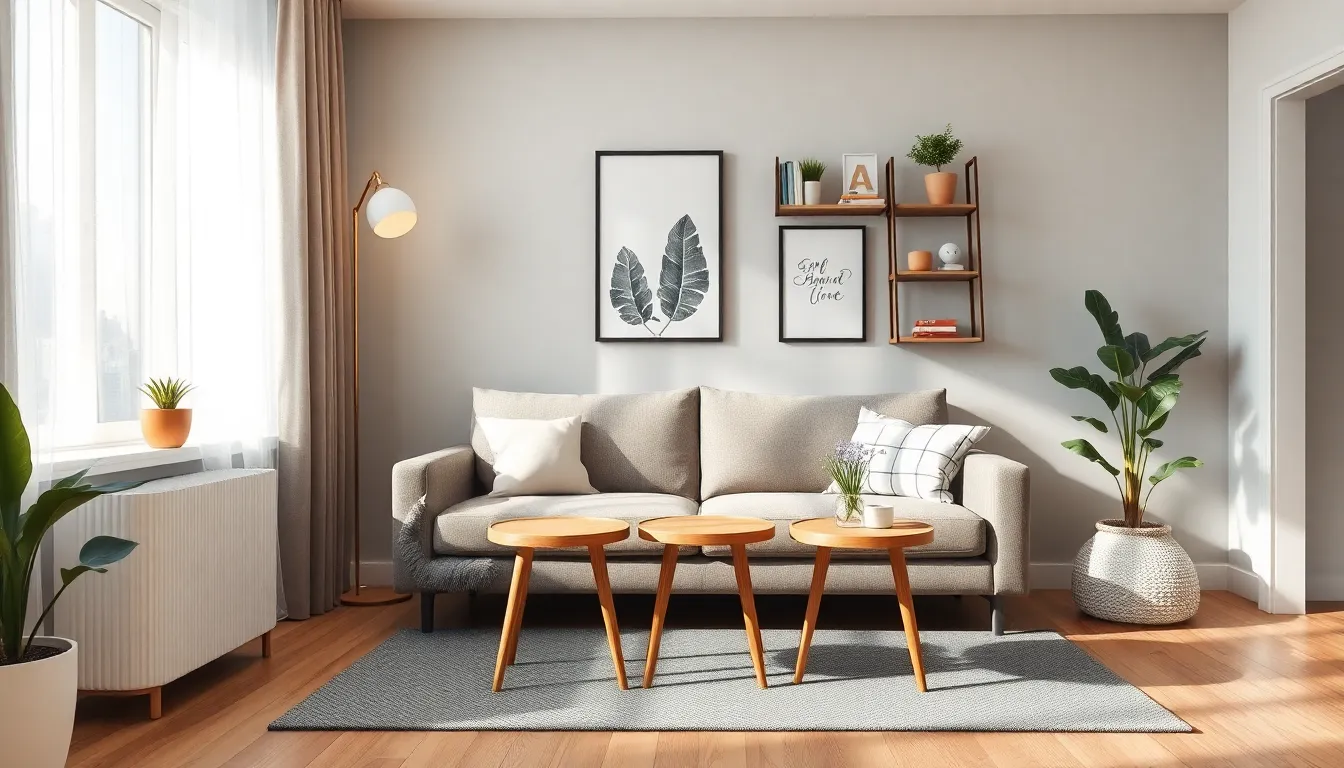Living in a small space doesn’t mean sacrificing style or comfort. With the right furniture choices, even the coziest corners can become functional and inviting. As urban living becomes more popular, the demand for smart solutions to maximize space grows.
Choosing the right pieces can transform a cramped apartment into a stylish haven. From multi-functional furniture to clever storage solutions, there are plenty of options that cater to limited square footage. This guide explores innovative furniture ideas that not only save space but also enhance the overall aesthetic of small living areas. Discover how to make the most of every inch while maintaining a chic and organized environment.
Table of Contents
ToggleImportance Of Choosing The Right Furniture For Small Spaces
Selecting the right furniture for small spaces ensures efficient use of limited square footage. Compact dimensions and multi-functional designs provide space-saving solutions, enabling residents to maintain comfort while maximizing utility.
Choosing furniture that fits well enhances the visual appeal of a small area. Streamlined shapes create an illusion of more space, making rooms appear larger and more inviting. Light-colored pieces reflect natural light, adding brightness to confined areas.
Focusing on versatile furniture offers significant advantages. For instance, sofa beds provide sitting and sleeping options without extra floor space. Nesting tables allow flexibility, accommodating various functions without occupying continuous space.
Prioritizing storage in furniture design addresses clutter concerns. Ottomans with hidden compartments or beds with drawers help organize belongings while maintaining a tidy environment. These features promote a sense of order and tranquility in shared living spaces.
In urban settings, selecting the appropriate furniture optimizes floor plans. Understanding the flow of movement and positioning of items enables effective transitions between spaces. This consideration enhances overall livability, ensuring that every inch serves a purpose.
Tips For Selecting Furniture For Small Spaces

Selecting the right furniture for small spaces involves strategic choices that optimize functionality and aesthetics. Thoughtful decisions enhance livability and create a more organized environment.
Consider Multi-Functionality
Multi-functional furniture serves multiple purposes, making it ideal for compact living. Examples include sofa beds that offer seating during the day and transform into sleeping space at night. Folding tables can provide dining options and storage solutions. Nesting tables offer surface area when needed and stack away when not in use. Choose furniture that adapts to daily needs and maximizes utility without consuming extra space.
Prioritize Scale and Proportion
Scale and proportion play significant roles in selecting furniture for small areas. Furniture should complement the space, creating a harmonious balance. Oversized pieces can overwhelm limited square footage, while smaller items can help maintain an open feel. Aim for slim profiles that allow for easy navigation while still providing comfort. Additionally, opt for items that utilize vertical space, such as tall bookshelves or wall-mounted shelves, to enhance storage without cluttering the floor.
Best Types Of Furniture For Small Spaces
Selecting the right furniture significantly impacts the functionality and aesthetics of small living areas. Focus on versatile and space-saving options that suit daily needs while maximizing utility.
Convertible Sofas
Convertible sofas, also known as sofa beds, serve dual purposes. They function as comfortable seating during the day and transform into beds at night. This flexibility is essential in small spaces where guests may require sleeping arrangements without sacrificing living space. Many designs feature stylish upholstery and slim profiles, enhancing both comfort and aesthetics. Contemporary styles often incorporate additional storage options, allowing users to tuck away bedding and pillows neatly.
Nesting Tables
Nesting tables offer versatility and adaptability. These multi-table sets can be arranged according to available space and needs. When entertaining, they can be spread out for snacks and drinks; when not in use, they stack neatly to minimize their footprint. Available in various materials, such as wood or metal, nesting tables can complement existing décor while providing functional surfaces. Their mobility allows for easy repositioning, making them perfect for dynamic spaces.
Wall-Mounted Shelves
Wall-mounted shelves utilize vertical space effectively, essential in small rooms. These shelves keep floors clear, creating an uncluttered environment. They provide ample space for books, decorative items, and essential storage without taking up precious square footage. Various designs, from open shelving to enclosed cabinets, suit diverse styles. Installation height can be adjusted based on personal preference, allowing for easy reach and customized organization.
Incorporating these types of furniture transforms small areas into functional, stylish settings while maximizing every square inch available.
Design Tips To Maximize Space
Maximizing space in small areas involves strategic design choices that enhance both functionality and aesthetics. Below are essential tips for achieving this in compact environments.
Color Schemes and Light
Utilizing light colors can make small spaces appear larger and more open. Shades like whites, light grays, and pastels reflect light, creating an airy feel. Incorporating mirrors in these color schemes amplifies brightness by reflecting natural light, further enhancing the spacious effect.
Choosing furniture in similar tones generates a cohesive look, reducing visual clutter. Accent colors can provide focal points without overwhelming the space. Opting for translucent materials, such as acrylic chairs or glass tables, can maintain an open atmosphere while serving practical purposes.
Creating Zones in Small Areas
Dividing small areas into functional zones optimizes utility without sacrificing style. Using furniture placement, area rugs, or screens can help define these zones effectively. For instance, a sofa can act as a divider between the living room and dining area, creating distinct spaces for different activities.
Employing multi-functional furniture—like storage ottomans or foldable desks—can further enhance the zoning concept. Each piece should serve dual purposes, allowing seamless transitions between work, relaxation, and entertainment. This strategic arrangement promotes an organized yet inviting environment that maximizes the potential of every square foot.
Choosing the right furniture for small spaces can transform limited areas into stylish and functional homes. By prioritizing multi-functional pieces and smart storage solutions, anyone can maximize their living environment without sacrificing comfort or aesthetics.
Incorporating designs that emphasize scale and proportion ensures that every item serves a purpose while maintaining an open feel. With thoughtful planning and strategic furniture selection, small spaces can become organized havens that reflect personal style and enhance daily living. Embracing these principles not only optimizes space but also creates a welcoming atmosphere that invites relaxation and creativity.


